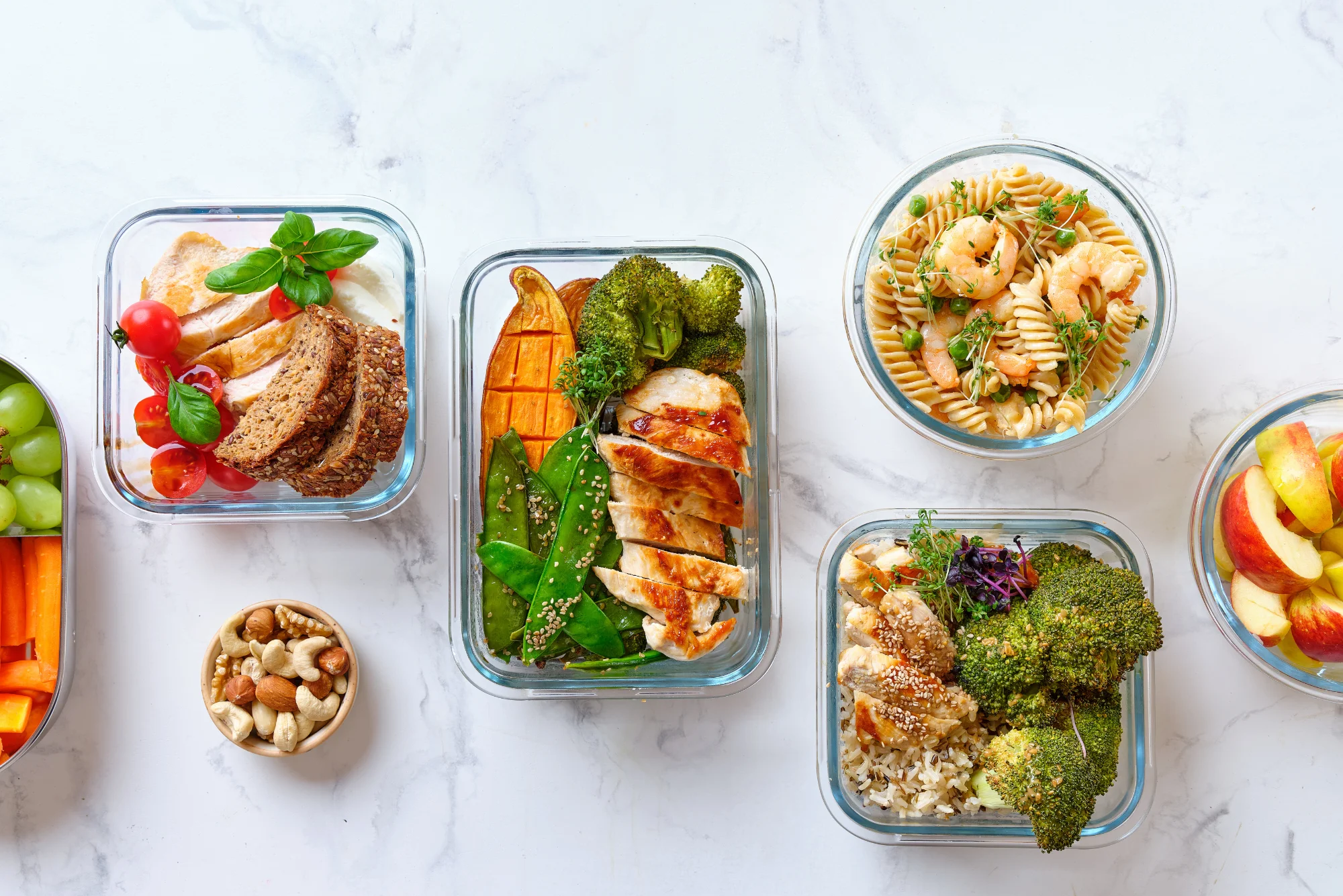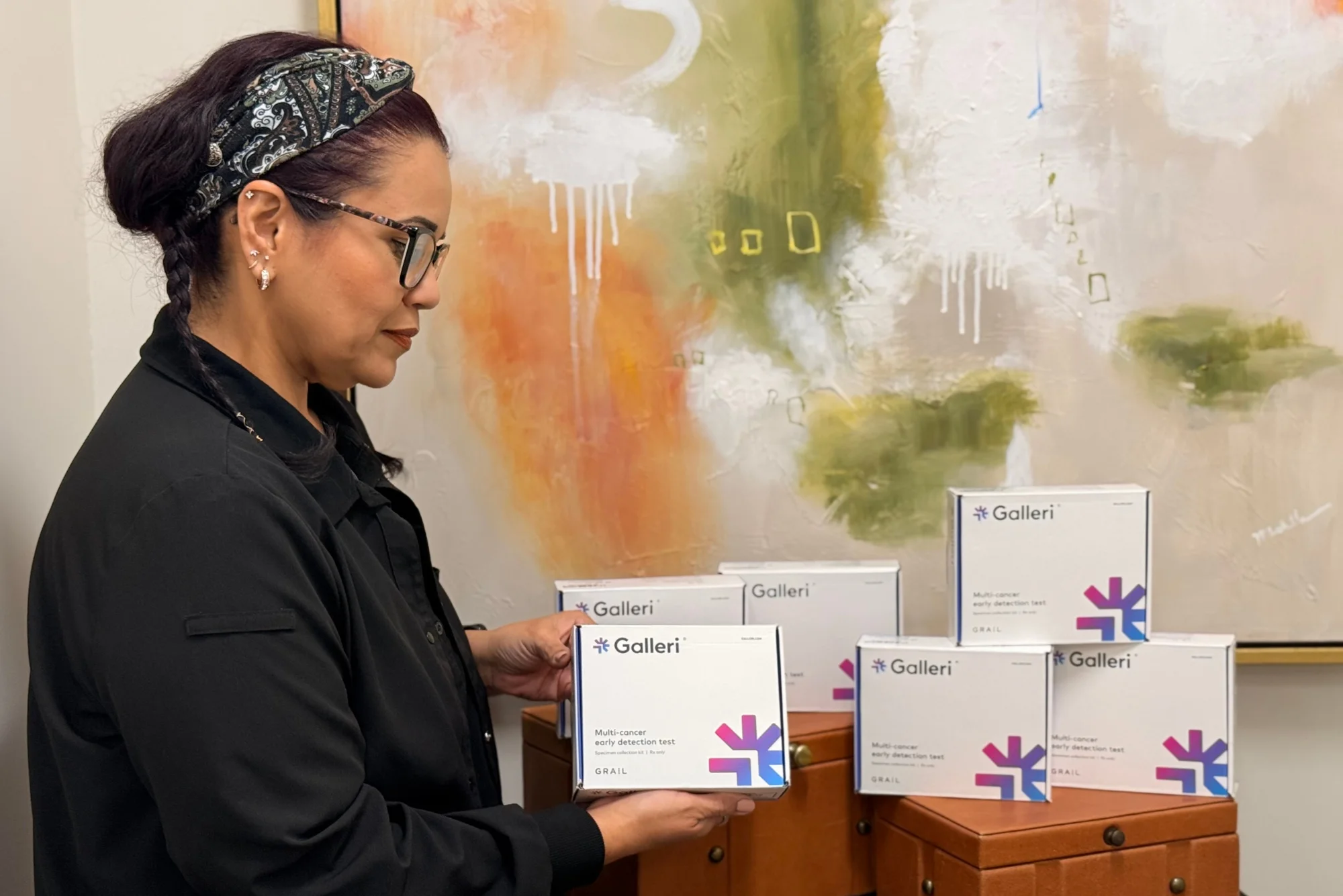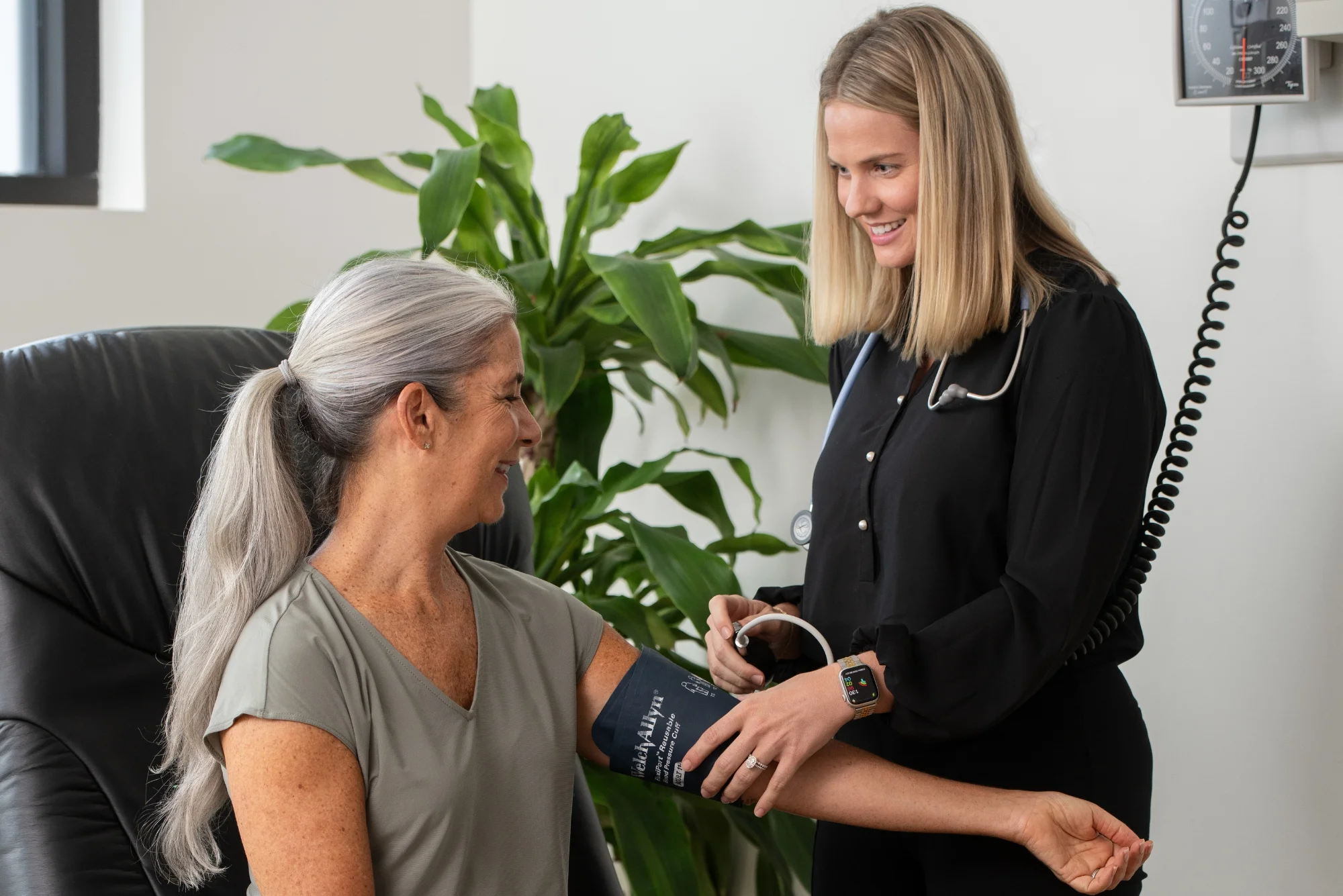
 At Griffin Concierge Medical, we are always looking to enhance your experience and prioritize prevention and optimization. To expand our referral network with healthcare professionals who share our commitment to your well-being, we’ve recently partnered with registered dietitian Cassandra Sampson, MS, RD, LDN, to offer personalized, in-depth nutritional counseling. Keep reading for Cassandra’s advice when it comes to managing diet while on weight-loss medications.
At Griffin Concierge Medical, we are always looking to enhance your experience and prioritize prevention and optimization. To expand our referral network with healthcare professionals who share our commitment to your well-being, we’ve recently partnered with registered dietitian Cassandra Sampson, MS, RD, LDN, to offer personalized, in-depth nutritional counseling. Keep reading for Cassandra’s advice when it comes to managing diet while on weight-loss medications.
While many lifestyle factors influence our health, such as stress, sleep, and physical activity, nutrition plays a big role in our overall wellness. That’s because food can help prevent disease—or increase the risk of it.
“When we zoom out, we have to think about how impactful our diet is,” says Sampson. “Whether it be anti-inflammatory foods or pro-inflammatory foods, what we’re choosing to eat plays a very important role when it comes to our health, now and in the future.”
Diet can sometimes be tricky because we often have a mindset of either eating healthy 100-percent of the time or succumbing to eating things that taste good but are not good for us.
“When we’re on certain diets, it’s hard to get out of that mentality of ‘I’m completely all in’ or ‘I’m completely all out,’ and the cycling pattern that results can be harmful to our health. Part of what I do when counseling patients is helping them find that balance between all or nothing,” explains Sampson. “When we create a plan that is going to be attainable and then sustainable, that’s where we get the benefits, long term.”
What has made things especially interesting in the diet space is the introduction of GLP-1 drugs that treat diabetes and aid with weight loss, leading to questions and challenges when it comes to how people shift their eating habits while on these medications.
GLP-1s (e.g., semaglutide, tirzepatide) help lower blood glucose levels. The effect is reduced appetite and increased satiety, which promotes weight loss and curbs hunger and cravings. (Learn more about how GLP-1 receptor agonists work from the Mayo Clinic) Sounds great, right? While they’re a great tool when looking to lose weight and manage diabetes, these drugs are not a magic solution that allows you to eat whatever you want with no consequences. In a way, you can negate the effectiveness of the medication if you’re not aware of the best ways to approach your diet at the same time.
“The most common and impactful outcome I’ve seen with patients taking GLP-1 medications is that it is described as quieting the food noise that’s happening in their minds,” Sampson says. “One particular patient I was talking with said the difference between her life before taking the medication versus newly being on it is like day and night—she’s not thinking about food all the time. It’s not constantly taking over her life anymore.”
Why Nutrition Matters While Taking GLP-1s
Making strategic decisions (that hopefully turn into habits) about what—and—how to eat is extremely important. Sampson suggests these tactics for managing your diet while on GLP-1 medications (and they’re also good strategies even if you’re not on them):
- Balance nutrients. Make sure to focus on lean protein (chicken, beans, fish), complex carbohydrates and high fiber (vegetables), and healthy fats (olive oil, avocados). Eat the protein first at every meal to increase satiety and try to make protein at least 20 percent of your calories. Limit alcohol, sugary foods, and processed foods. “To prevent the risk of a nutrient deficiency (like protein), we need to make sure that what we’re eating is balanced because we’re not going be eating as much [on GLP-1 medications],” Sampson says. Try using an app to track your protein intake and help you reach your goals.
- Try packing a nutritional punch. Homemade smoothies can be a nice way to get in balanced nutrients and help you stay full. You can experiment with such ingredients as berries, spinach, a little banana or Greek yogurt, and some kind of base liquid. Stay clear of commercial ones, which are loaded with added sugar and simple carbohydrates. People assume it’s healthy because it’s a smoothie but don’t realize what all is in there or how many calories it has. Making smoothies at home gives you more control.
- Stay hydrated. Shoot for 64 ounces of water intake per day. Sometimes dehydration can masquerade as hunger, so if you stay hydrated, you reduce the chance of mindless eating. “Hydration helps with weight loss, and it also helps with joint pain and stiffness, allowing our bodies to function at their best,” Sampson says.
- Make meal decisions in advance. Meal prepping and meal planning are key to making smart decisions. If you’re in a hurry or stressed at mealtime, you may tend to eat whatever is the fastest and most convenient—and probably not the healthiest choice. If you’ve taken the time to prep your meals in advance, this will be the most convenient and easiest option and will help you not fall back on old habits of reaching for an unhealthy snack or fast food. If you go out to eat, look at the menu beforehand to make a healthy choice when you’re not tempted by the ambience (and social aspects) of dining out.
- Eat mindfully and slowly. When eating, try to disconnect from work or your phone or anything that can distract your mind. “Anything that is taking our attention away from eating can hurt us in the long run because we won’t be fully paying attention to what our body is feeling regarding fullness,” Sampson says. If you’re distracted, you’re eating fast, and this will delay that realization of fullness, causing you to eat more. It’s important to pay attention to how your body feels and to stop eating once you feel comfortably full.
- Manage side effects. GLP-1 medications can have side effects, like nausea, stomach cramps, and dizziness, making it difficult for some patients to maintain their healthy habits, like keeping up with physical activity and hitting their protein goals. And some other medications you’re taking can promote weight gain or influence your diet. It’s important to talk to your Griffin physician about not only those risks but also any side effects that you may experience, so that your physician can consider changing doses to help get you back on track.
- Don’t be afraid to ask for help. Nutritional counseling can help you with the intangible factors that influence dietary choices, such as accountability. “Not everyone is the same, but many patients that I work with, especially for weight loss, have been down this road before,” Sampson says. “They know the protein sources, they’ve been on all the diets, they know what’s low in carbs. My role is about making goals and holding you accountable so we can see how you’ve been progressing and what barriers have popped up.”
“We want to make sure that while patients are on the medications, they are striving to get into those healthy habits and routines and maintain healthy lifestyles, so that when they go off the medications—ultimately, the goal—they are already living a healthy life,” concludes Sampson.
Next Steps: Book a Nutritional Counseling Session
Interested in a GLP-1 nutrition plan and counseling session with Cassandra? Talk to your Griffin physician or designated patient care coordinator about scheduling an appointment. Griffin members receive a complimentary initial consultation with Cassandra, in which she will work with you to set your goals, identify the changes you need to make, and determine how she can help you stay accountable.
For those on GLP-1 medications, Cassandra can help you manage protein goals, guide you on foods to eat to minimize nausea, and help ensure you’re not losing muscle mass while losing weight.
Griffin Concierge Medical in Tampa offers in-house nutritional counseling for GLP-1 patients. Schedule your session today to personalize your plan and stay on track.




